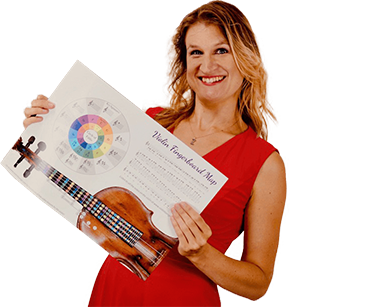How to Find ALL Notes on the Violin Fingerboard | Violin Lounge TV #322
Learn the exact spots of all possible notes on the violin, know which notes you can play and play in tune with this video and fingering chart
Ever wonder how you find all those notes on the violin? I’ll break it down for you here!
When you start you’ll start playing the violin you start in first position which is one tone up from the open string. You can then place your other fingers down as well.
We mainly use the E string to play higher notes but you can also play higher up on the other strings to create that warmer sound.
Position Play
By using position play, going up the fingerboard, you are able to create higher notes and different sound colors.
In the middle of the string you have one octave higher and as you shorten the string length it continues to go up an octave. So as you move up the fingerboard the notes are smaller distances and closer together. This is demonstrated in my FREE violin fingering chart.
How do we find the highest note?
You can find many similar notes on similar strings because the strings are a 5th apart and when we use our fingers we are always making the note higher. The highest possible note on the violin can be found by playing the A string at the highest possible octave as you move up the string and the distances get shorter and shorter.
PRACTICE!
Practice is something you hear me talk about A LOT. Same goes for this.
When you are learning, begin with the first position and build up slowly. This ensures your playing does not get sloppy. You must train yourself to transition from one note to another.

Hi! I'm Zlata
Classical violinist helping you overcome technical struggles and play with feeling by improving your bow technique.
Questions? Drop them in the comments below!
Also let me know in the comments if you found my fingerboard useful!


Still, I am a little bit curious how to play the notes which are not in line with the basic notes which we learned from the basic course.
For pieces in C, to play the F you can either move your finger on the D-string from the E sideways (same for playing the C, finger on the A string from the B-position to the C position)…it works…. The sliding of the finger needs to be practiced? Or is this right?
On the other hand : When directly playing the next finger sideways(e.g. play F directly next to E-finger) it is not very handy if this finger is after this needed for the note above.
Hi Dirk, when you play a F instead of F sharp, you place your second finger lower. However, this should be practiced step by step in scales. A beginner scale book can be really useful for this: https://violinlounge.com/article/6-best-violin-scale-books/